18 beautiful beaches that have haunting shipwrecks with mysterious pasts
Zoë Miller,Zoë Ettinger

- There are many beaches around the world with the decaying remnants of once-great ships.
- Unlike underwater shipwrecks like the Titanic, these can be seen in plain view.
- On the shores of Boa Vista, in Cape Verde, lies the remains of a cargo ship that was delivering goods to South American supporters of Francisco Franco, who ruled Spain from 1939 to 1975.
Even if most aren't as catastrophic as the sinking of the Titanic, shipwrecks continue to fascinate scientists and the public alike. While some wrecks require complex equipment to investigate, plenty can be seen on beaches around the world.
From the MV Plassey in Inisheer, Ireland, a steam trawler wreck famous from the British TV series "Father Ted," to Cape Verde's Cabo Santa Maria, a wrecked cargo ship that had been carrying gifts for Spanish dictator Francisco Franco's supporters in South America, each shipwreck has a story to tell.
Here are 15 beautiful beaches that have haunting shipwrecks you can can see from the comfort of your home — without sandals or scuba gear.
Read the original article on InsiderOnce a large cruise ship, the World Discover hit an uncharted reef in 2000, and has remained shipwrecked in the Solomon Islands ever since.

According to Atlas Obscura, though everyone on board the ship was safely evacuated, the ship's captain had no choice but to attempt to dock it in Roderick Bay, in the Solomon Islands, to prevent it from sinking entirely.
Though several salvage companies tried to retrieve the ship, they found that it had been "ransacked by locals," according to Atlas Obscura. As tidal activity and weather patterns continue to deteriorate the ship, it's likely it will remain there until it crumbles into the ocean.
- Read more:
- The world's oldest intact shipwreck was just found in the Black Sea — here are 25 other famous shipwrecks around the world
- This self-driving boat explores the mysteries of long-lost shipwrecks, and joined the search for Amelia Earhart's plane
- 26 award-winning underwater photos reveal the magical worlds beneath the ocean's surface
Nicknamed "Bad Eddie" this ship was towed into the Magheraclogher Beach in Donegal, Ireland, in 1977.
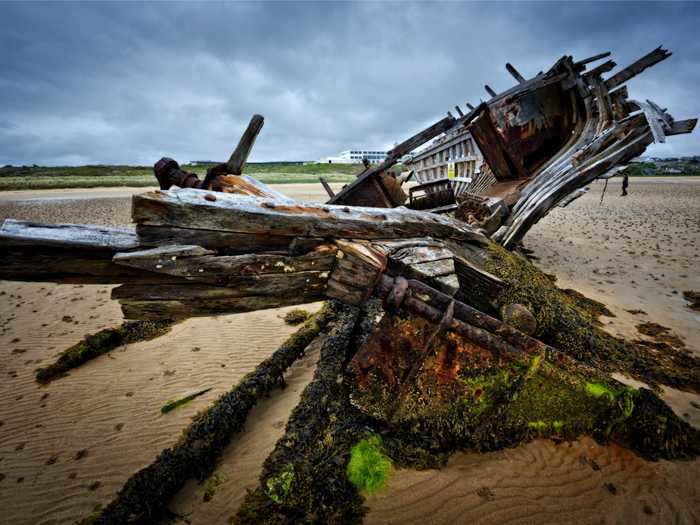
This ship is also called "Cara na Mara", which is Irish for "Friend of the Sea". Local councilor, John Seamais O Fearraigh, told Irish News, "The boat came from France and was bought by a local fisherman but was washed up on the shore in bad weather in the 1970s."
Since then, it has become a local fixture, and "local people use it for wedding pictures," according to Fearraigh. It was even featured on the album cover of a band called Clannad.
Referred to by locals as "The Lost Boat", this shipwreck lies on Masirah, an island in the Arabian sea off the coast of Oman.

"The Lost Boat" is a type of ship called a dhow. Dhows are one- or two-masted Arab sailing vessels, usually with slanted, triangular sails. They are common in the Red Sea and the Indian Ocean, according to Britannica.
Little is known about the wreck, but it has attracted interest from around the world.
After a storm in 2019, a shipwreck was exposed on the beach in Glowe, on the island of Rügen, Germany. It is believed by experts to be an 18th century merchant ship.
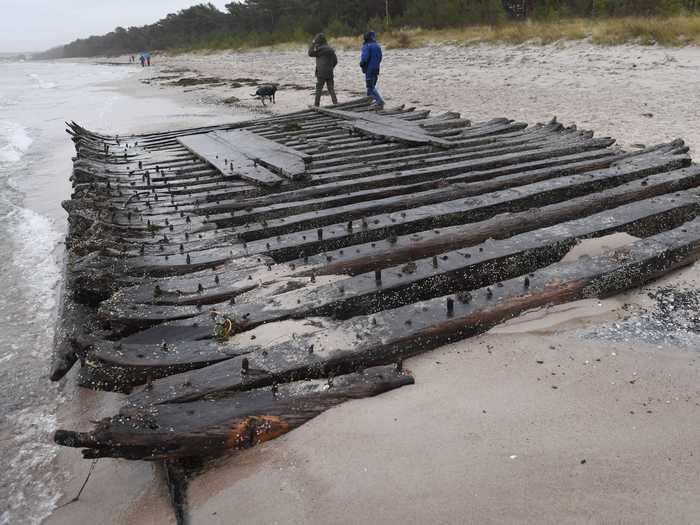
According to Teller Report, Mecklenburg-Western Pomerania's State Office for Culture and Historic Preservation believe the ship to be an 18th century merchant ship from the Netherlands. "This was indicated by the design features of the ship," said State Archaeologist Detlef Jantzen.
Jantzen tested samples from the ship and determined that it was a "large, flat-bottomed, commerical vessel". However, what the ship transported and why remain unknown, shrouding it in mystery.
At a park in Ontario, Canada, there are more than 20 underwater shipwrecks such as the Sweepstakes, a sunken schooner in Big Tub Harbor.
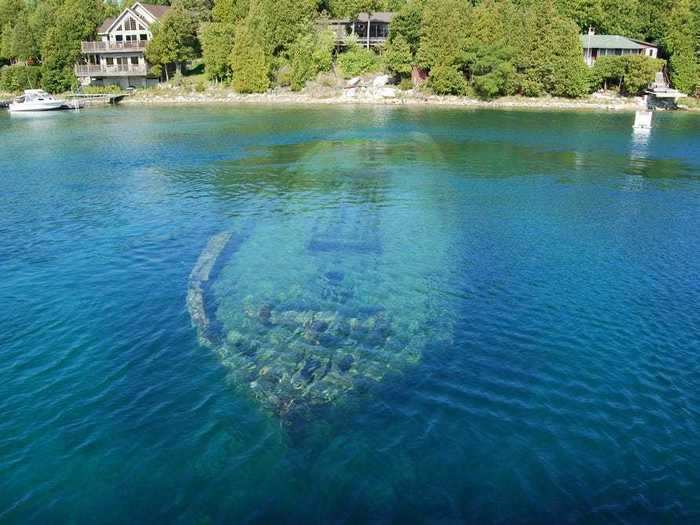
With more than 20 underwater shipwrecks, Ontario's Fathom Five National Marine Park — located near the harbor village of Tobermory — is a popular diving destination.
The Sweepstakes, a two-masted Canadian schooner, is one of the most famous wrecks at the park. Damaged at nearby Cove Island in 1885, the vessel sank when she was towed to Big Tub Harbor, where she remains to this day.
On Anguilla's Sandy Ground beach, the wreck of the Sarah, a 232-foot-long ship that sank during Hurricane Klaus in 1984, looms large.
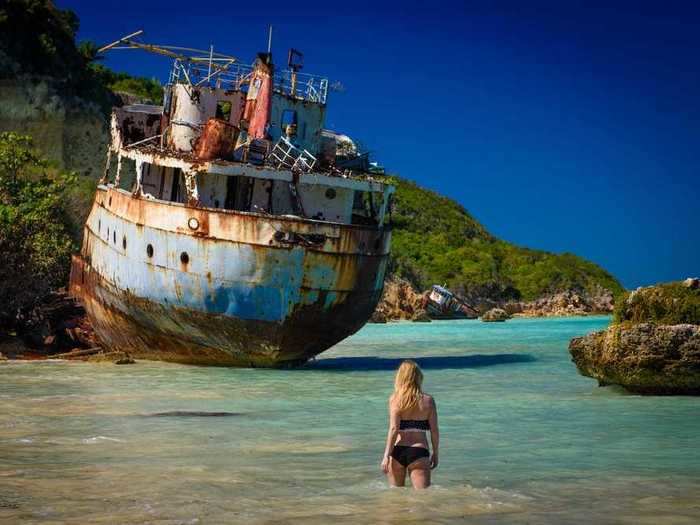
South of Turks and Caicos, another island, Anguilla, boasts an impressive shipwreck. On Sandy Ground — one of Anguilla's 33 beaches — the wreck of the Sarah looms large. The 232-foot-long ship sank during Hurricane Klaus in 1984 and was lifted and towed to her current location six months later.
Rumor has it that the Agios Dimitrios in Gythio of Peloponnese, Greece, was set on fire to conceal the fact that it was smuggling cigarettes between Turkey and Italy.
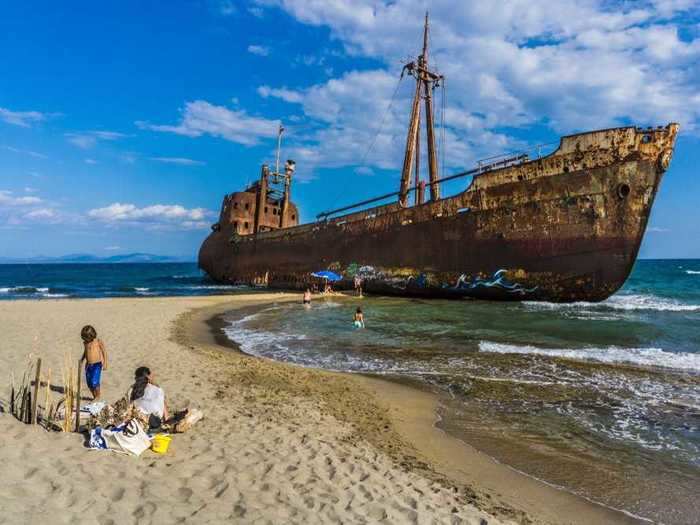
By some accounts, the ship was being used to smuggle cigarettes between Turkey and Italy and was set on fire to conceal the evidence. But it could have just been abandoned at a port in Gíthion, three miles north of Valtaki Beach, where it washed up in 1981 and remains today.
The wreck of the storied SS American Star has been eroding since it was beached on Playa de Garcey in Fuertaventura, one of the Canary Islands, in 1994.
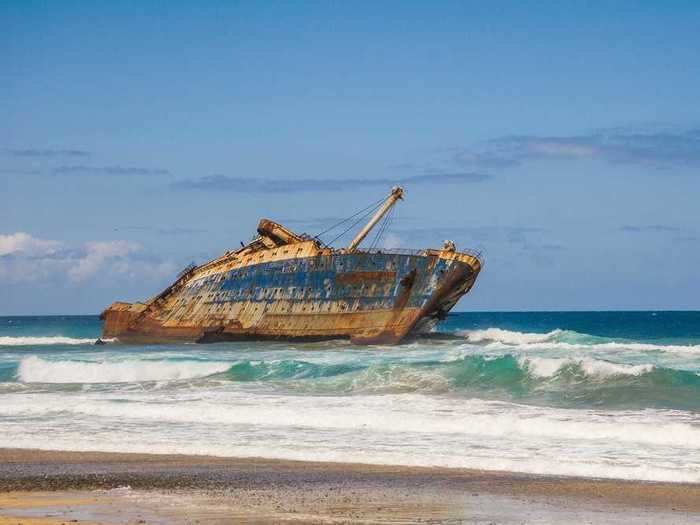
The SS American Star has had many names in her lifetime, ranging from the America to the Australis.
Launched in 1939 by Eleanor Roosevelt, just before the beginning of World War II, the storied vessel began life as a passenger ship, but was soon repurposed by the Navy to transport US troops. After the war, she became a commercial ship once more. By the 1990s, the aging seacraft was saved from the scrap metal pile by a team in Thailand who wanted to convert her into a floating hotel.
However, en route to her new home in 1994, the SS American Star was wrecked during a thunderstorm off the coast of Fuertaventura, one of the Canary Islands. Gradually decaying in the interim, the wreckage is now only visible at low tide.
A shipwreck at the Point Reyes National Seashore in Inverness, California, where more than 50 ships were lost at sea, stands as a poignant symbol of US maritime history.

In Inverness, California, is the Point Reyes National Seashore, where an iconic shipwreck (nicknamed the "SS Point Reyes") stands as a beautiful yet solemn symbol of US maritime history.
Until the Point Reyes Lighthouse was constructed in 1870, nearly one million dollars worth of ships and cargo perished on the rocks of the Point. In total, more than 50 ships were lost in this treacherous stretch of water.
Some shipwrecks in Roatán, Honduras, were intentionally sunk so scuba divers could explore them.
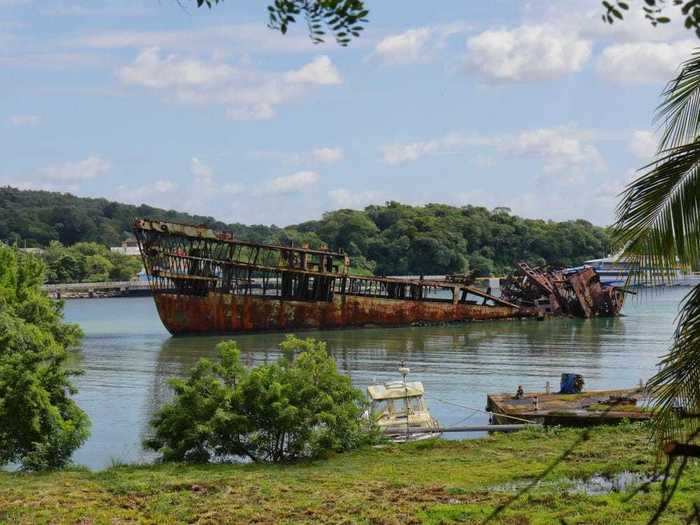
A number of shipwrecks in Roatán, one of Honduras' Bay Islands, were intentionally sunk for the scuba industry. The Prince Albert, a Nicaraguan tanker that remained in Roatán after delivering refugees, was the vessel that started the trend. Others, including the El Aguila, were at least partially sunk by Mother Nature.
The wreck that extends from Mahogany Bay — a cruise port developed by Carnival Corporation — can be examined from above the water's surface.
The wreck of the MV Plassey on the shore of Inisheer, one of Ireland's Aran Islands, is featured in the British TV series "Father Ted".
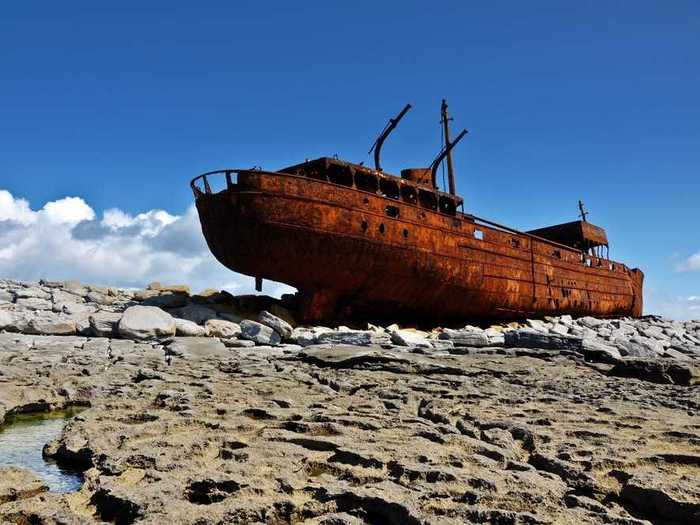
Fans of British TV might recognize the wreck of the MV Plassey from the opening credits of "Father Ted," a popular BBC series about a priest in rural Ireland. The steam trawler, used to transport cargo including stained glass, yarn, and whiskey, went ashore on Inisheer — one of Ireland's Aran Islands — in 1960. A rough storm was to blame.
In Greece, the Ionian island of Zakynthos harbors the wreck of the MV Panagiotis. The site where it was stranded is nicknamed Navagio Beach (Shipwreck Beach).
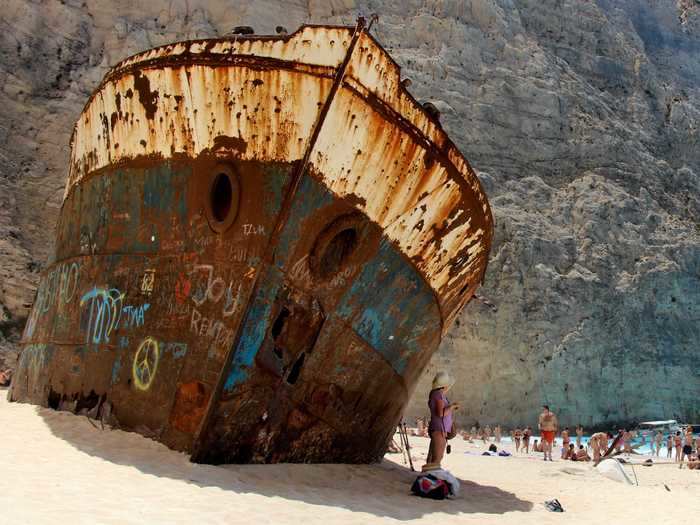
On Zakynthos, one of Greece's Ionian islands, is the wreck of the MV Panagiotis. The shipwreck is so famous that it lends its nickname to the place where it's been stranded since the 1980s, Navagio Beach (Shipwreck Beach).
There are several theories surrounding the fate of the MV Panagiotis, a smuggler ship. Although no one is certain exactly what the vessel was smuggling — people have postulated it carried everything from cigarettes to alcohol to human cargo — some speculate that it ran aground after being cornered by maritime authorities.
The ship's captain, Charalambos Kompothekras-Kotsoros, maintains a less sensational account. He says that due to inclement weather, the vessel was propelled toward the beach, where thieves looted part of the shipment and some equipment.
The ethereal remains of the Helvetia, a 19th-century Norwegian ship, are scattered over three miles of sand in Rhossili Bay, a beach in Swansea, Wales.
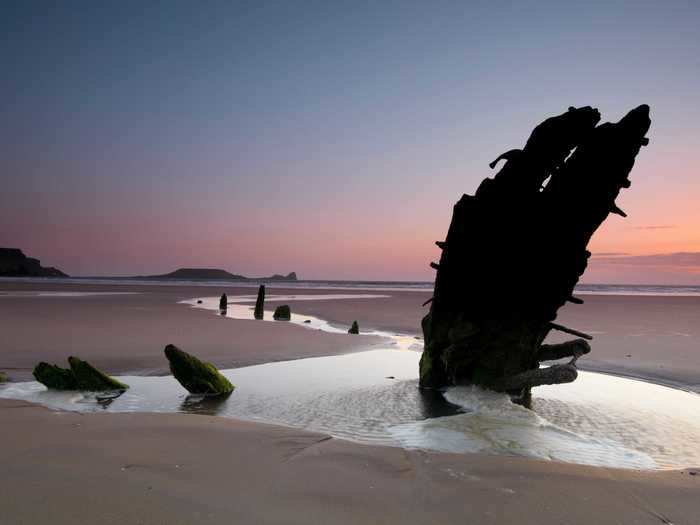
In Swansea, Wales, the otherworldly remnants of the Helvetia, an oak barque from Norway that collided with another ship in 1887, protrude from the shore of Rhossili Bay. Although the shipwreck dots three miles of the beach, the current of the Atlantic Ocean has eroded the wreckage over the years.
The beached wreck of an unknown tugboat is in Vila Nova de Milfontes, a picturesque seaside village in Odemira, Portugal.
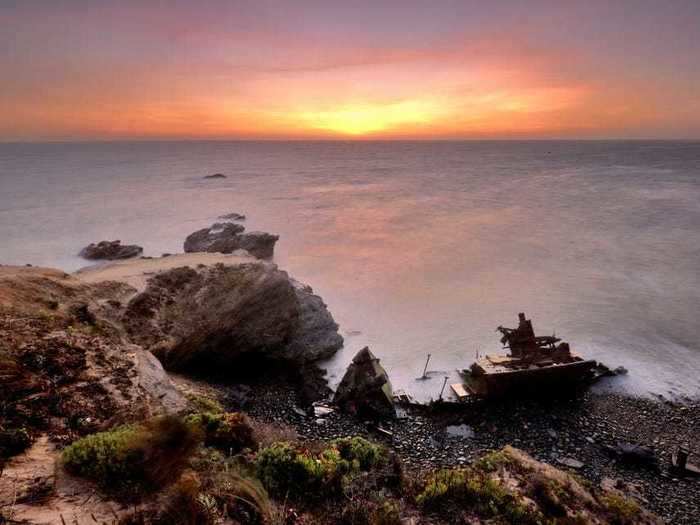
On the southwest coast of Portugal, is Vila Nova de Milfontes. This seaside village is known for its beautiful beach, which harbors the wreck of a tugboat. Not much is known about the shipwreck, but its mystery is part of the appeal.
The Cabo Santa Maria, sent to South America by Spanish dictator Francisco Franco with gifts for his supporters, was wrecked on the shore of Boa Vista, Cape Verde.
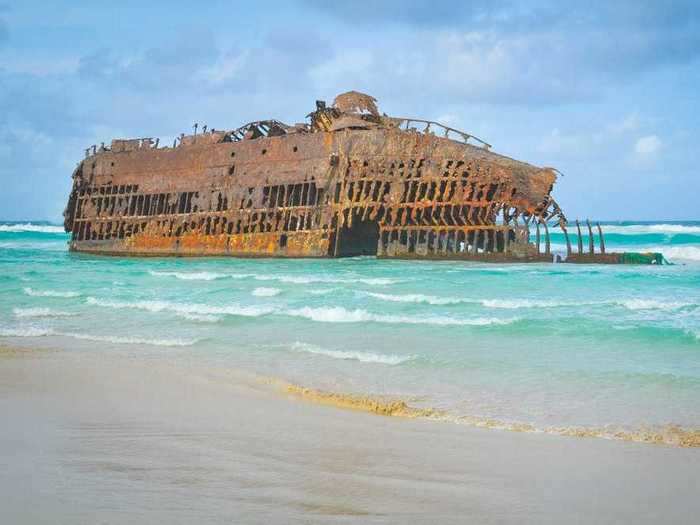
When Spanish dictator Francisco Franco sent the Cabo Santa Maria to deliver gifts to his supporters in South America in 1968 (everything from cars and clothing to food and drinks), no one expected that the cargo ship would run aground in Cape Verde, where the vessel became stranded on the island of Boa Vista.
Today, the wreck of the ship is at Praia de Atalanta (Atalanta Beach) one of the island's most beautiful beaches.
Used as a hospital ship during World War I, the SS Maheno was wrecked by a cyclone on Fraser Island in Queensland, Australia, en route to Japan.
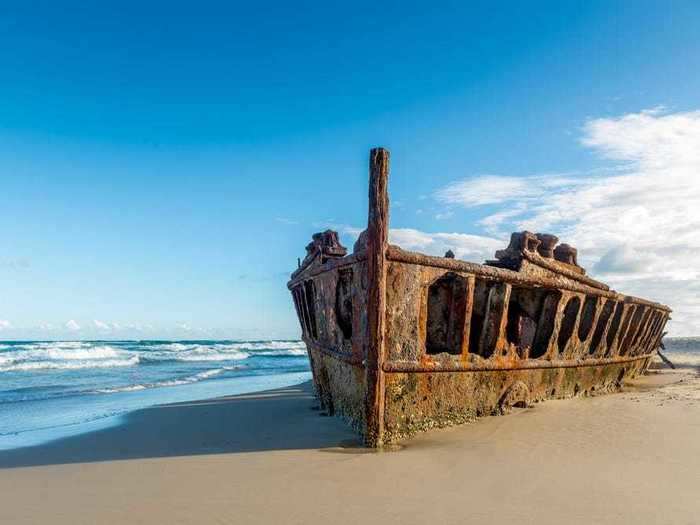
Fraser Island in Queensland, Australia, is known for its shipwrecks — 23, to be exact. One of the most famous ones is the SS Maheno, a 5,000-ton, turbine-driven steamer constructed in 1905. Used as a hospital ship during World War I, the vessel was sold to Japan to be converted to scrap metal in the 1930s. En route to her final destination, the SS Maheno was destroyed by a cyclone.
The Mega One Triton, a former oil rig, washed ashore on Governor's Beach on Grand Turk Island, Turks and Caicos, in 2012 during Hurricane Sandy.

It's estimated that there are more than 1,000 shipwrecks off the shores of Turks and Caicos. One of the most recent wrecks is the Mega One Triton, a former oil rig that washed up on Grand Turk Island's Governor's Beach in 2012 during Hurricane Sandy.
The wreck of the Peter Iredale, a steel barque sailing vessel that was beached more than 100 years ago, is in Oregon's Fort Stevens State Park.
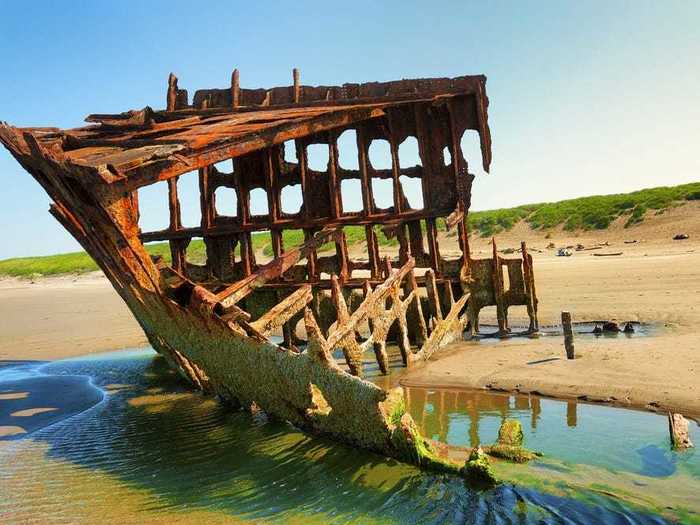
In Oregon's Fort Stevens National Park, lies the wreck of the Peter Iredale, a four-masted steel barque sailing vessel. The Iredale, originally owned by a British shipping firm, has been ashore since a mighty gust of wind pushed it aground in 1906.
READ MORE ARTICLES ON
Popular Right Now
Popular Keywords
Advertisement